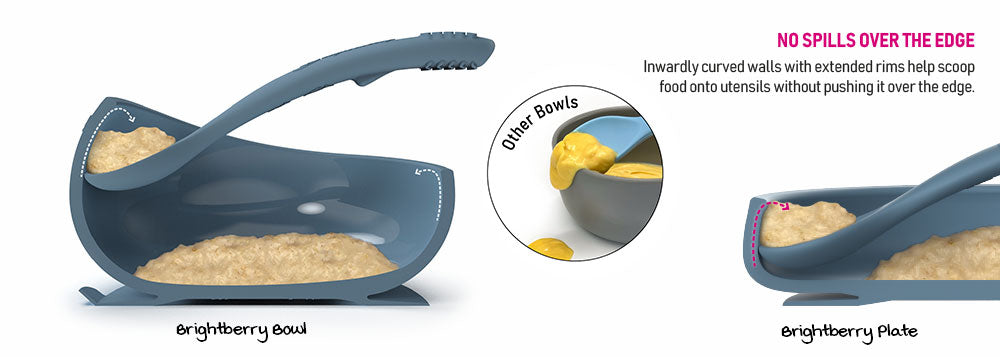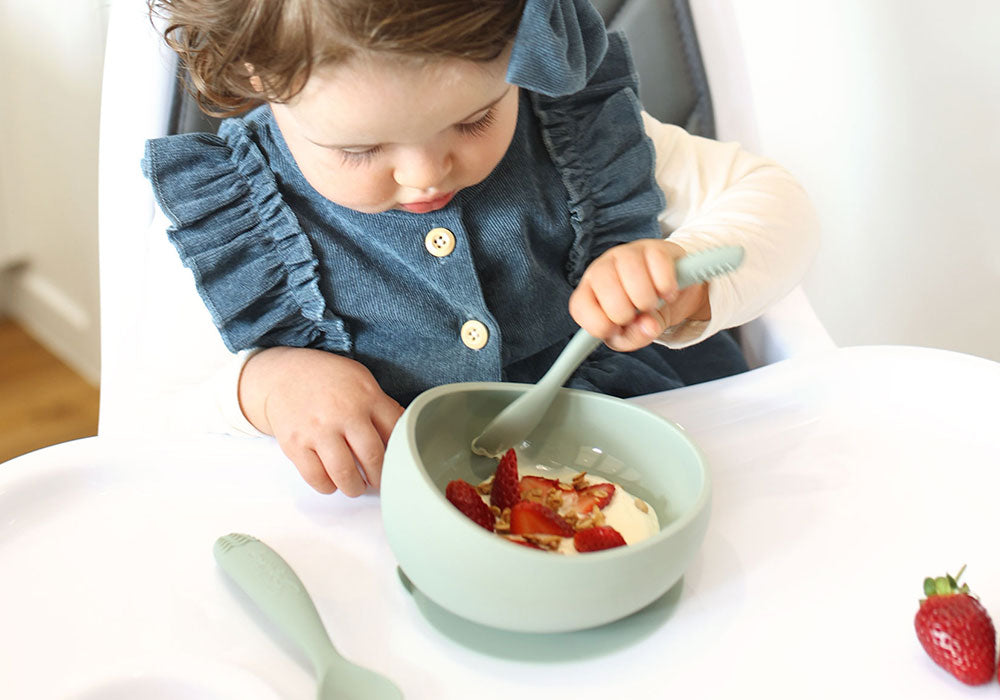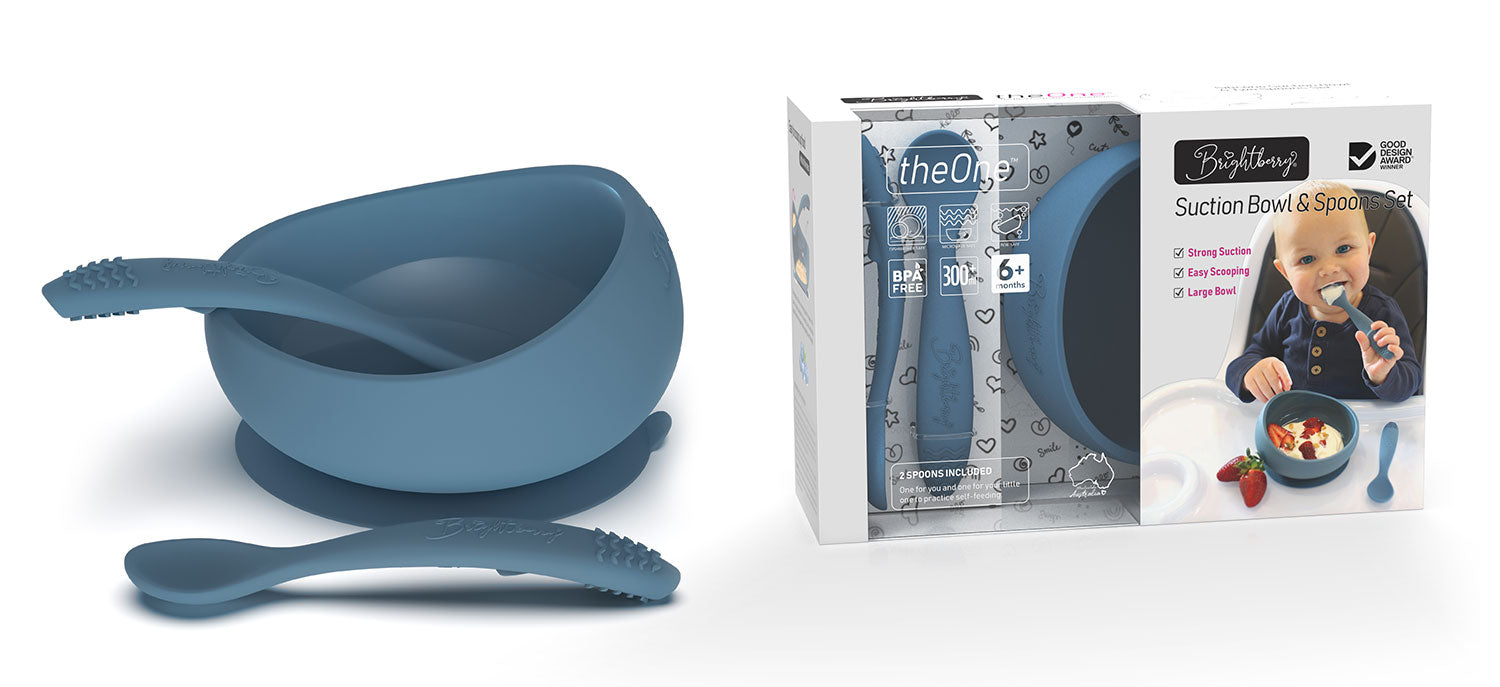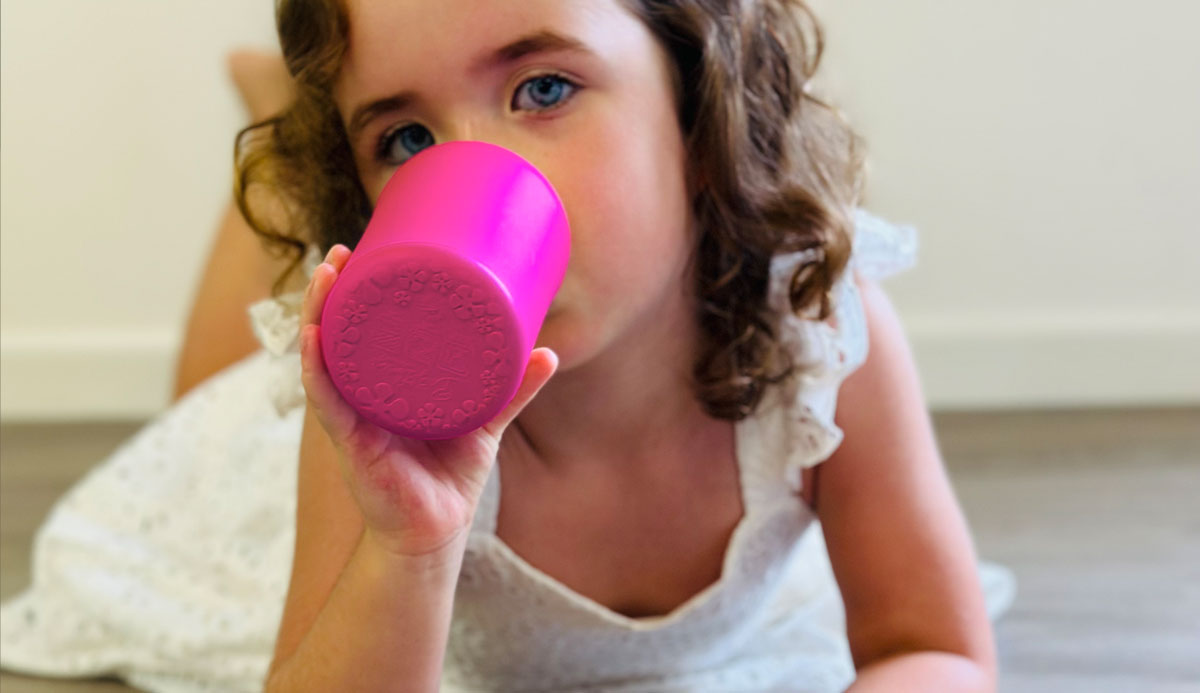The Ultimate Guide to Silicone Baby Feeding Sets: Everything You Need to Know

As you prepare to introduce solid foods to your little one or plan as a mum-to-be, choosing the right feeding tools is essential. Silicone baby feeding sets, including silicone bowls, have become increasingly popular. But why do parents prefer them over traditional materials like glass? This guide to silicone baby feeding sets breaks down their benefits, explains why they are safer, more convenient, and eco-friendly, and helps you pick the best option for your child.
What Are Baby Feeding Sets?
Baby feeding sets are a collection of tableware designed to assist your baby during meal times as they transition from breastfeeding or bottle-feeding to eating solids. They typically include plates, bowls, cups, utensils, and bibs. Silicone baby feeding sets, made from high-quality, food-grade silicone, are a favourite due to their safety, durability, easy-to-clean nature, and eco-friendliness.
Why Choose A Silicone Feeding Set for Your Baby?
Here are several reasons why the benefits of silicone tableware and feeding sets make them an excellent choice. From safety to durability, these sets offer everything parents need for hassle-free mealtimes.
1. Safety and Non-Toxicity
Silicone is a non-toxic, hypoallergenic material that does not contain harmful chemicals like BPA, PVC, or phthalates commonly found in plastic products. These chemicals can leach into food and pose health risks, especially when exposed to heat. Silicone remains chemically stable, ensuring your baby's food is free from contaminants. Additionally, silicone's hypoallergenic properties make it less likely to cause allergic reactions, providing a safer feeding experience.
 2. Durability and Versatility
2. Durability and Versatility
Silicone feeding sets are incredibly durable and can withstand various temperatures, from freezing to boiling. You can store food in the freezer, heat it in the microwave, and serve it directly to your baby. Unlike glass or ceramic, silicone doesn't break when dropped, making it a safer and more practical choice for babies learning to feed themselves.
3. Easy to Clean and Maintain
Silicone feeding sets are non-porous, which means they don't harbour bacteria or absorb food odours. This makes cleaning a breeze. You can wash them with warm, soapy water or put them in the dishwasher for a thorough clean. Their resistance to stains and odours ensures they remain hygienic for each use, reducing the risk of contamination.
4. Eco-Friendly Choice
Unlike disposable plastic products that contribute to landfill waste, silicone baby feeding sets are long-lasting and recyclable. Although silicone requires specialised recycling facilities, choosing silicone reduces the frequency of replacements and minimises environmental impact. By opting for silicone, you make a sustainable choice that benefits your child and the planet.
5. Leak-Proof Design
Say goodbye to messy spills and leaks, as silicone feeding sets are designed with precision to prevent accidents.
What to Look for in a Silicone Feeding Set
Choosing the proper silicone feeding set involves more than selecting any product off the shelf. Here are some essential features to consider:
Food-Grade Certification
Ensure the feeding set is made from 100% food-grade silicone, free from harmful chemicals and safe for your baby. Look for certifications, such as FDA or LFGB approval, which indicate the product meets high safety standards.

Design and Functionality
The design of a feeding set can significantly impact its usability. Features like suction bases on bowls and plates help prevent spills, while easy-grip utensils and soft, flexible cups are perfect for little hands learning to self-feed. Divided plates can also help serve different food groups, promoting a balanced diet.

Age Appropriateness
Different feeding sets are tailored to various developmental stages. Look for sets with soft spoons and gentle suction for babies just starting on solids. More complex sets with multiple utensils and divided plates can support self-feeding and motor skill development for older babies.
Types of Silicone Baby Feeding Sets
- Suction Plates and Bowls
Silicone suction plates and bowls have suction bases that keep them firmly in place, reducing spills and making mealtime less messy. They are perfect for encouraging self-feeding as the bowls and plates stay secure, even when little hands try to push or grab them.
![]()
- Silicone Cups
Silicone cups are lightweight and soft, making them ideal for transitioning from bottle-feeding to independent drinking. Their durability and flexibility also make them safe for toddlers who frequently drop their cups.

- Silicone Utensils
Silicone spoons and forks are designed to be gentle on your baby's gums and teeth. Their ergonomic design helps babies develop fine motor skills while learning to feed themselves. Some utensils also double as teethers, providing relief for teething babies.

- Silicone Bibs
Silicone bibs often feature a food-catching pocket, making clean-up easier by catching spills or dribbles. They are waterproof and easy to wipe clean, and unlike fabric bibs, they do not stain or retain odours.
How to Choose the Best Silicone Baby Feeding Set
When selecting a silicone baby feeding set, consider the following factors:
- Quality of Silicone
Ensure the set is made from high-quality, food-grade silicone free from harmful chemicals like BPA, PVC, phthalates, and latex. This will guarantee the product's safety and durability, providing peace of mind during mealtimes.
- Practical Design
Consider sets with thoughtful design features like suction bases, divided plates, and easy-grip utensils. These elements can make feeding more effortless for you and your baby, promoting a positive mealtime experience.

- Developmental Suitability
Choose a feeding set that matches your child's age and developmental stage. Sets designed for younger babies may include softer spoons and smaller bowls. In comparison, sets for older babies might feature more complex designs to encourage self-feeding and independence.
- Value for Money
High-quality silicone feeding sets may have a higher price tag. Still, they often provide better value due to their durability and safety. Consider investing in a set that will last through multiple stages of your child's development, reducing the need for frequent replacements.
![]()
Pro Tips for Using and Caring for Silicone Baby Tableware
Preparation and Cleaning
Before using your silicone feeding set for the first time, wash all components thoroughly in warm, soapy water to remove any residues. Be sure to dry thoroughly as well to avoid any odour buildup. Regular cleaning of your silicone tableware is essential to keeping your baby healthy and extending the lifespan of the feeding set.

Stain and Odour Removal
Although silicone is resistant to stains, certain foods like tomato sauce can leave marks. If this happens, soak the stained items in baking soda and water or rub them with a lemon to help lift the stains and remove any lingering odours.
Proper Storage
Store silicone feeding items in a clean, dry place away from direct sunlight to prevent discolouration and maintain their quality. Avoid storing them near strong-smelling substances, as silicone can sometimes absorb odours.
How to Transition Your Baby to Solid Foods
Introducing solid foods to your baby is an exciting but challenging milestone. Here are some tips to make the transition smoother:
Introduce One Item at a Time
Begin with small amounts of pureed foods and gradually introduce more variety as your baby adapts to different tastes and textures. To make the experience comfortable, use silicone spoons that are gentle on their gums.
Encourage Self-Feeding
Offer your baby small, manageable pieces of food and let them try to feed themselves. Silicone utensils and cups designed for little hands can help foster independence and improve motor skills.
Be Patient
Remember, transitioning from breast milk or formula to solid foods is a significant change for your baby. Patience is critical during this transition. Let your baby explore the new foods and utensils at their own pace. There might be some mess and rejected meals, but that's all part of the learning process. Your patience and encouragement can make this transition smoother and more enjoyable for your baby.
Make Mealtime Fun
Use colourful silicone plates and utensils to engage your baby's interest. Talk about the foods your baby is eating, describe the colours and textures, and encourage them to explore new tastes. A positive mealtime environment can help your baby develop a healthy relationship with food.
Frequently Asked Questions
Is silicone feeding set safe?
Yes, silicone feeding sets are safe because they are made from non-toxic, food-grade materials that do not contain harmful chemicals like BPA or phthalates.
Are silicone plates suitable for babies?
Yes, silicone plates are suitable for babies because they are durable, easy to clean, and free from harmful chemicals, making them a safe meal choice.
Are silicone baby feeders safe?
Yes, silicone baby feeders are safe. They are made from non-toxic, food-grade silicone that is gentle on gums and free from harmful substances.
Is silicone bad for babies to chew on?
No, silicone is not bad for babies to chew on as long as it is made from food-grade material. It provides a safe and soothing option for teething.

















